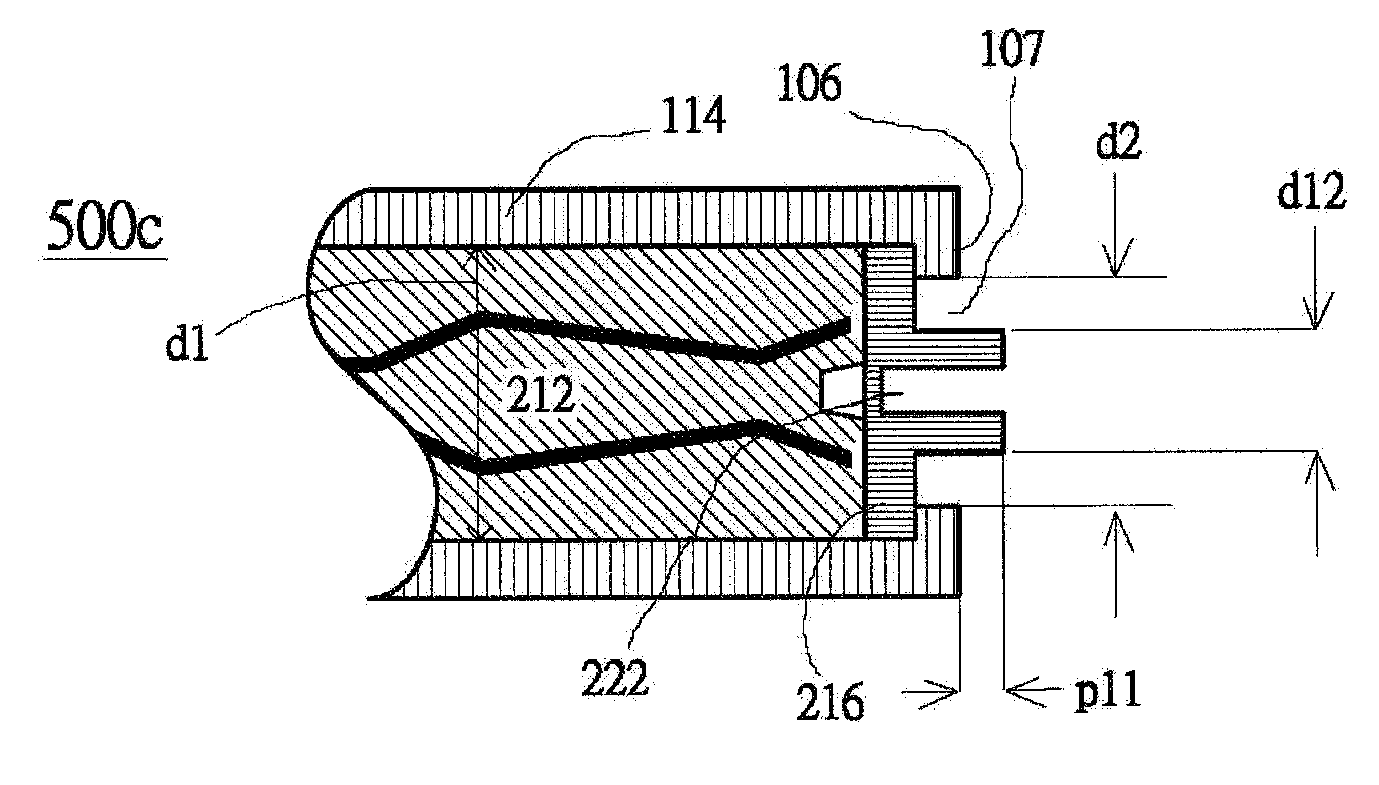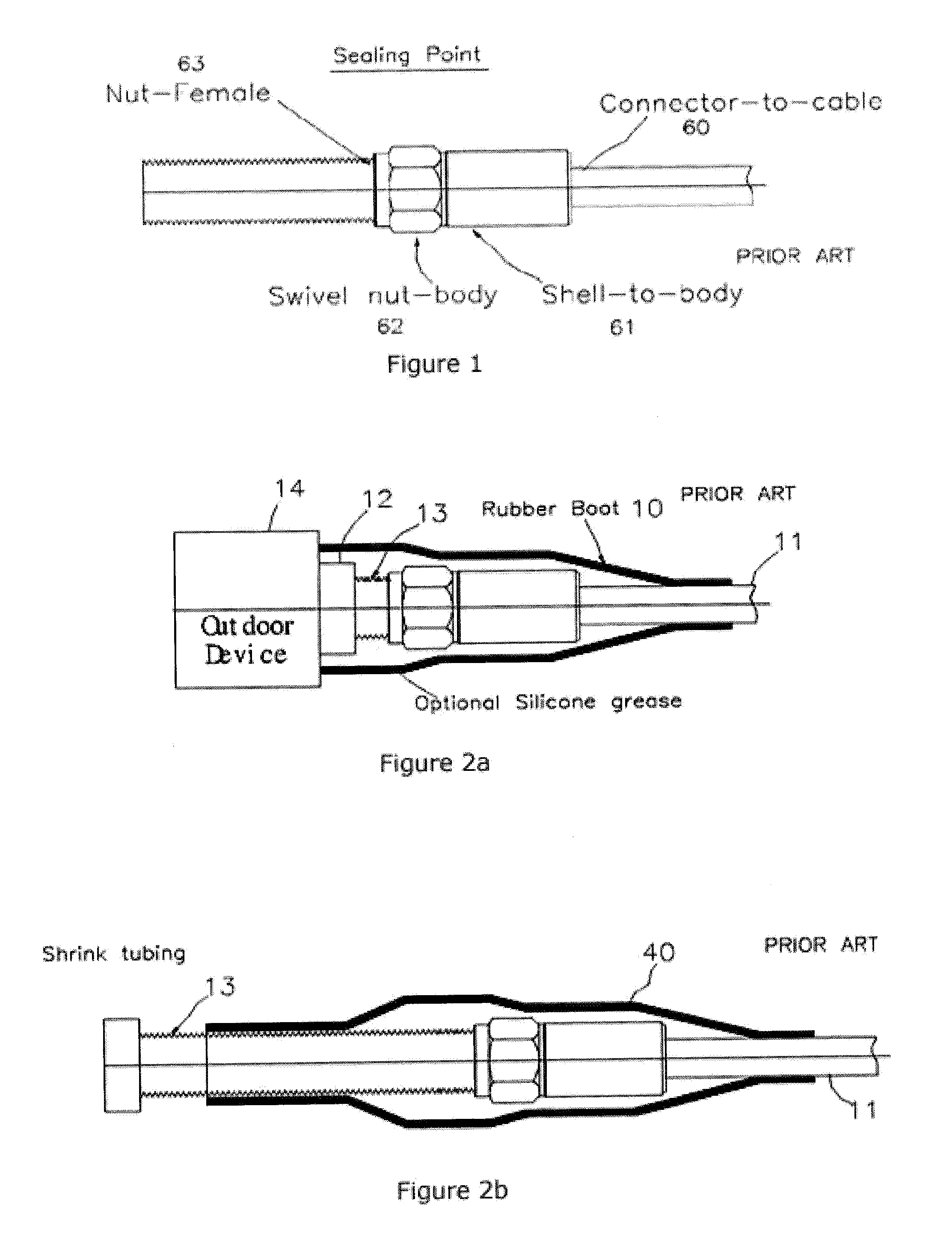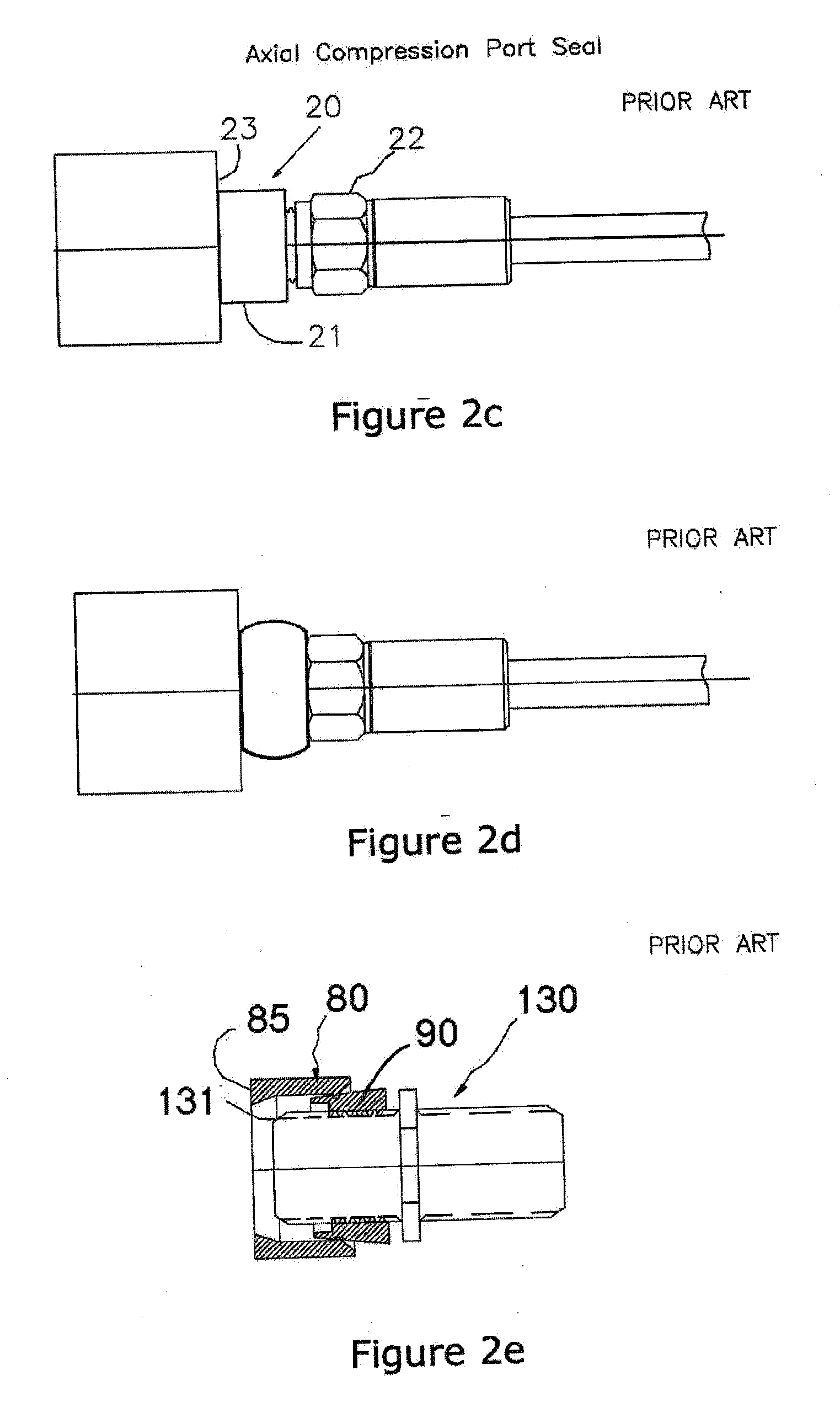Coaxial cable connector with internal pressure seal
a technology of pressure seals and coaxial cables, applied in the direction of insulated conductors, cables, coupling device connections, etc., can solve the problems of degrading signal quality, adversely affecting signal quality in systems employing coaxial cables, and no such industry focus on connector to connector pressure seals
- Summary
- Abstract
- Description
- Claims
- Application Information
AI Technical Summary
Benefits of technology
Problems solved by technology
Method used
Image
Examples
Embodiment Construction
[0035]The disclosure provided in the following pages describes examples of some embodiments of the invention. The designs, figures, and description are non-limiting examples of certain embodiments of the invention. For example, other embodiments of the disclosed systems and methods may or may not include the features described herein. Moreover, disclosed advantages and benefits may apply to only certain embodiments of the invention and should be not used to limit the disclosed inventions.
[0036]As can be found in the prior art, FIG. 3 shows parts of a coaxial cable connection 300 including a female F-Type connector or port 102 and a male F-Type connector 104. The male connector includes a mandrel or tube 112 and in some embodiments a nut 110. The nut includes a threaded bore 115 adjacent to a partially closed end 117 having a central opening 119. The mandrel passes through the central opening and a rim extending from the mandrel's outer diameter at one end 113 rotatably engages the p...
PUM
| Property | Measurement | Unit |
|---|---|---|
| outer diameter | aaaaa | aaaaa |
| inner diameter | aaaaa | aaaaa |
| diameter | aaaaa | aaaaa |
Abstract
Description
Claims
Application Information
 Login to View More
Login to View More - R&D
- Intellectual Property
- Life Sciences
- Materials
- Tech Scout
- Unparalleled Data Quality
- Higher Quality Content
- 60% Fewer Hallucinations
Browse by: Latest US Patents, China's latest patents, Technical Efficacy Thesaurus, Application Domain, Technology Topic, Popular Technical Reports.
© 2025 PatSnap. All rights reserved.Legal|Privacy policy|Modern Slavery Act Transparency Statement|Sitemap|About US| Contact US: help@patsnap.com



